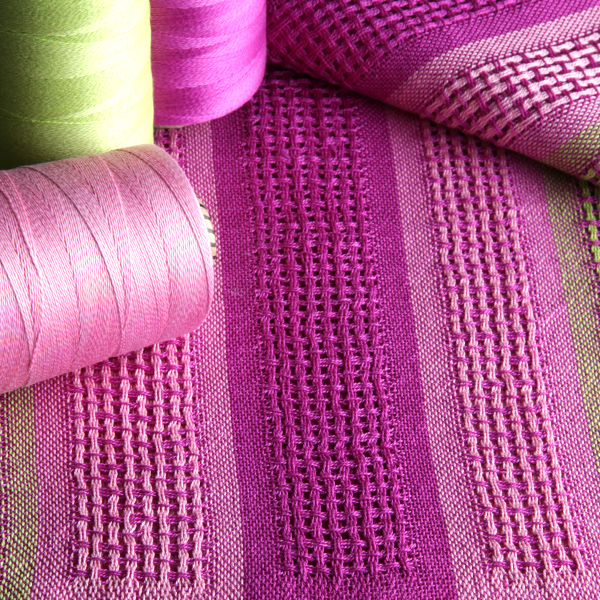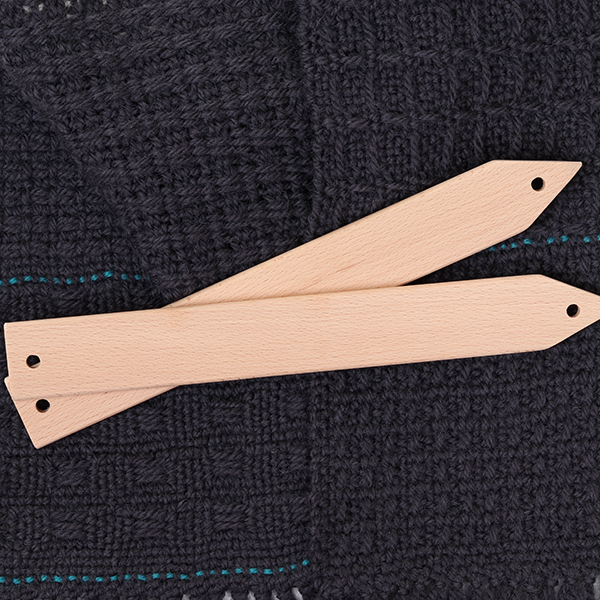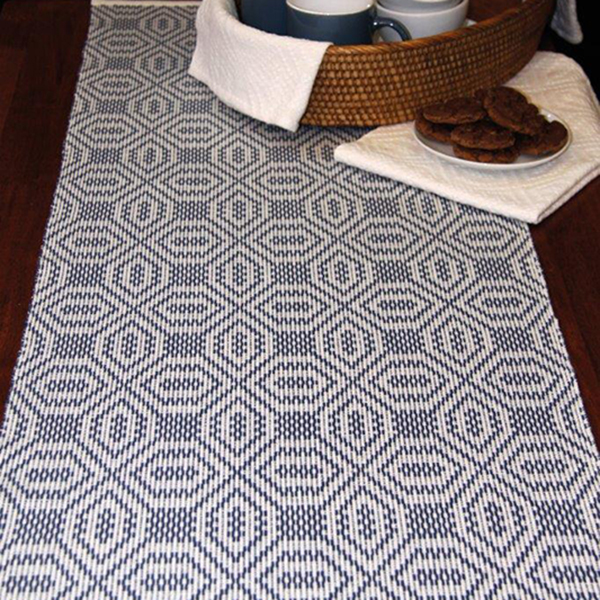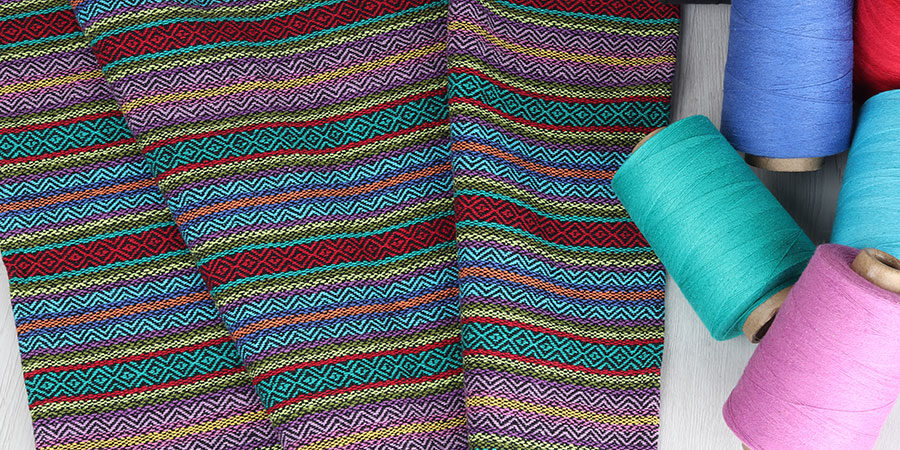
Stash busting with a multi-coloured twill
By Robyn Spady. ‘As seen in Heddlecraft, issue #42, shared with permission.
Robyn Spady was introduced to handweaving as a baby with her handwoven baby blanket woven by her great-grandmother. Inspired by her blankie, she learned to weave at a young age and has been weaving for over 50 years. Robyn is fascinated by the infinite possibilities of crossing threads and loves coming up with new ideas to create fabric and transform it into something new and exciting. She is committed to turning the weaving world on to double-faced fabrics, four-shaft weaves, uncommon and advanced weave structures, and passementerie techniques. Robyn is also the founder and editor of Heddlecraft® magazine – a digital magazine, launched in 2016, for handweavers. Robyn believed there was a void in educational resources for the intermediate-to-advanced weaver (and adventure-seeking beginners).
Robyn recently did a review of our Cottolin yarn – you can read the full review from Heddlecraft magazine HERE
Warp: 8/2 cottolin (Ashford Cottolin – 70% cotton, 30% linen)
Sett: 22 epi
Sleying: 11-dent reed, 2/dent
Floating selvedge: No, tubular double weave selvedge was added for the eight-shaft version.
Weft: 8/2 cottolin, black (Ashford cottolin – 70% cotton, 30% linen)
Towels are a great opportunity to incorporate an abundance of color. This makes it a perfect way to use small amounts of yarn that may have accumulated in your stash. This was the impetus for the design of this multi-colored twill towel.
There was something else that prompted me to come up with this design. In Carol Strickler’s book, A Weavers Book of 8-shaft Patterns, is pattern #728. I have seen many interpretations of this pattern for towels. Since #728 is an eight-shaft pattern, I wondered if I could develop a version of it for weavers with four-shaft looms. Here is what I came up with, and I think it turned out pretty well.
I used this four-shaft twill pattern for my ‘test drive’ of Ashford’s cottolin yarn (see pages 71-72). The threading repeat is one repeat. The color sequencing for one-half of the towel is shown on the page following the threading and treadling. Yes, it may look like a lot of work to warp all these colors (there are a total of twelve colors in this particular towel); however, once the warping is complete, the towel is woven with a single shuttle and a simple treadling sequence. Plus, the majority of colors are in groups of four. This can be a method for coming up with new color combinations.
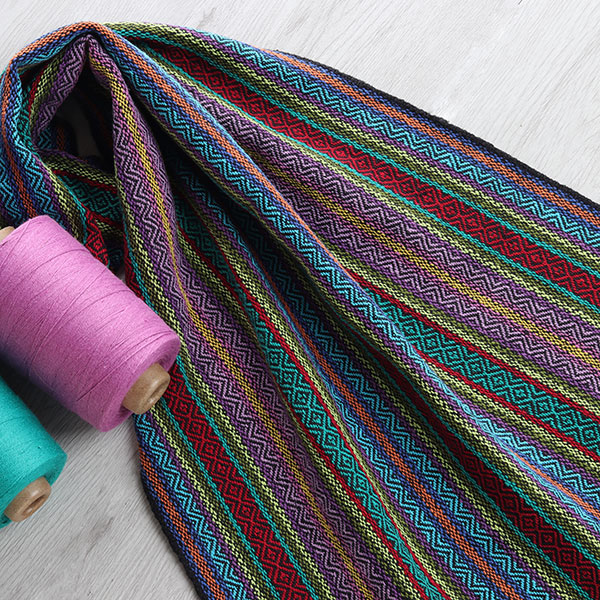
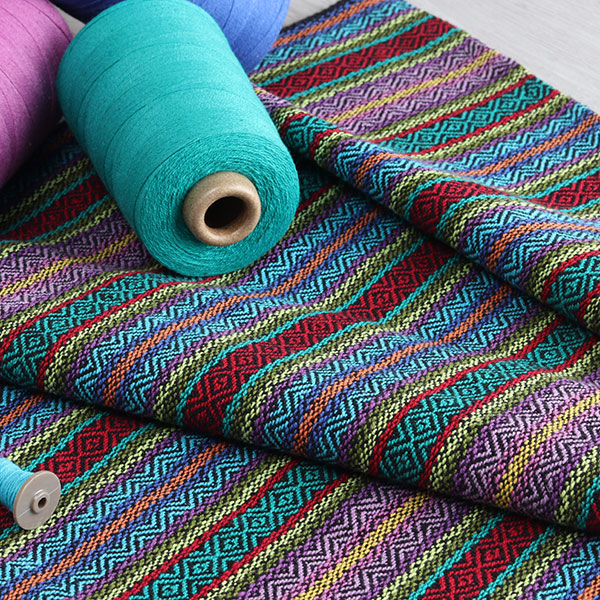
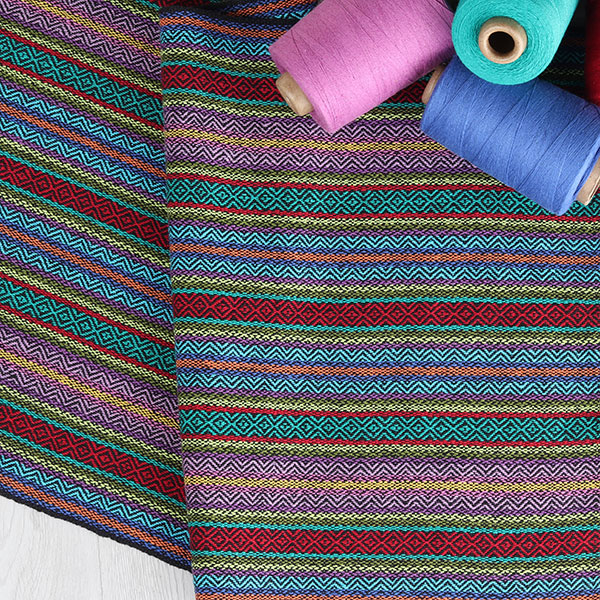

Lorem ipsum dolor sit amet, consectetur adipiscing elit. Ut elit tellus, luctus nec ullamcorper mattis, pulvinar dapibus leo.






